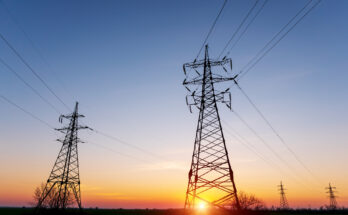Vestas, the global pioneer in sustainable energy solutions, has been providing a blade recycling partnership solution to numerous wind farm owners in the United States. Vestas is now providing this service in the United States and is willing to expand into other locations where local recycling infrastructure is strong and client demand can be created.
The first large-scale project, which saw Vestas service staff decommission and recycle ten turbine blades, was completed successfully in September. Several projects are now under construction across several locations, including the 151 MW Blue Canyon 2 repowering project and the 63 MW Snyder Wind project with Enel Green Power. The operators of both initiatives made it a point to recycle the discarded blades. At the moment, all current recycling initiatives in the United States have totaled 285 turbine blades, including nacelle coverings and hub covers.
Vestas specialists scope an ideal recycling project plan as part of the solution to correspond with locally accessible options and client demands. After that, the recyclable glass fiber material is removed from the turbine and chopped into transportable components. The material is then transferred to verified recycling partners, where it is recycled using a glass fiber technique that corresponds with the customer’s sustainability goals. Cement co-processing, gasification, the formation of new composite materials, and the reclamation of glass fiber and carbon fibers are all examples of recycling technologies.
“It is an urgent and vital problem to develop a comprehensive recycling infrastructure to meet the waste management challenge across the renewables industry.” Glass fiber recycling processes are now at a position where they can be swiftly scaled up, and with renewable facility owners growing increasingly concerned about the environmental impact of decommissioning assets, it’s no longer a matter of demand or volume. “At Vestas, we’re ready to help scale up glass fiber recycling around the world by leveraging our global transport and logistics footprint, and we’re ready to offer recycling partnership solutions wherever we see an opportunity with local recycling partners and where customers value it,” said Lisa Ekstrand, Senior Director and Head of Sustainability at Vestas.
“Enel is committed to accelerating the implementation of blade recycling procedures throughout our projects when they reach the decommissioning phase in order to support a more sustainable future for wind generation.” Working with Vestas expands our circularity objectives by allowing us to scale up our recycling activities,” says Peter Perrault, Director and Head of Circular Economy at Enel North America.
Vestas is actively involved in the DecomBlades project, a cross-sector collaboration aimed at increasing the adoption of recycling methods through the development of commercialization paths. Vestas is trying to assist the adoption of a circular economy across the renewables industry as worldwide installed capacity of renewables is expected to expand dramatically over the next decade. Vestas is now leading the CETEC project, which is a collaboration of academic and industrial experts attempting to commercialize a novel circularity technology for turbine blades.
As the waste management industry continues to change, Vestas is expanding its recycling solutions as part of its service offering. With 52 000 tons of blade waste anticipated to exist in Europe by 2050 and more than two million tons predicted to exist in the United States by 2050, the demand for scalable recycling solutions is growing. [1] In Europe, the wind industry has campaigned for a ban on landfill disposal of turbine blades by 2025, and waste management and circularity regulations are tightening in several regions.





